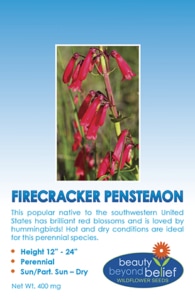Morning Garden Meditation
Spending Time in You’re Garden
by Sandy Swegel
Yesterday afternoon the musical ditty stuck in my head was a new rendition of “Grandma got run over by a Reindeer.” The music was the same but the lyrics were “I got dive bombed by a Hummingbird.” I was minding my own business weeding a lovely rock garden bed of yellow columbine and tall red Firecracker penstemons when I heard a loud motor coming down suddenly from the sky nearly skimming my head, and then accelerating up straight into the sky. It was like one of those old war movies on TV where the fighter pilots zoom down on their targets. I actually jumped up and moved because I have been dive bombed by stealth crows before who actually hit me in the head when I had the nerve to walk in their territory.
An “Ah Ha” moment washed over me when I suddenly saw the garden from a bird’s eye view. If I were a bird flying 200 feet overhead, I would have spied the beacon of bright red spires of the penstemon sticking up inviting me for lunch. Then at the last moment before reaching the delicacy, a big old ugly human 1000 times my size was in the way who needed to be removed before a meal could be enjoyed. Hence the effective tactic of dive bombing.
Still, it was all rather odd…so naturally I Googled “dive bomb by hummingbird” and found this was quite a common phenomenon. Male hummingbirds fly 100 feet up into the air and then dive down easily reaching 60 mph. As they pull up just before hitting the ground (or me) they experience 9 Gs, a force of gravity that would make human pilots black out.
Wow. It was a good thing I got out of the way. About three minutes later I saw the hummingbird happily visiting all the penstemon blossoms, eating away.
So my garden meditation for today is once again “Look Up!” My garden isn’t just the patch of land I see at my feet. It reaches hundreds of feet above my head where birds and trees and insects dance in the wind.
Photo credit:
drdanslandscaping.blogspot.com/2012/05/our-favorite-spring-annuals.html


